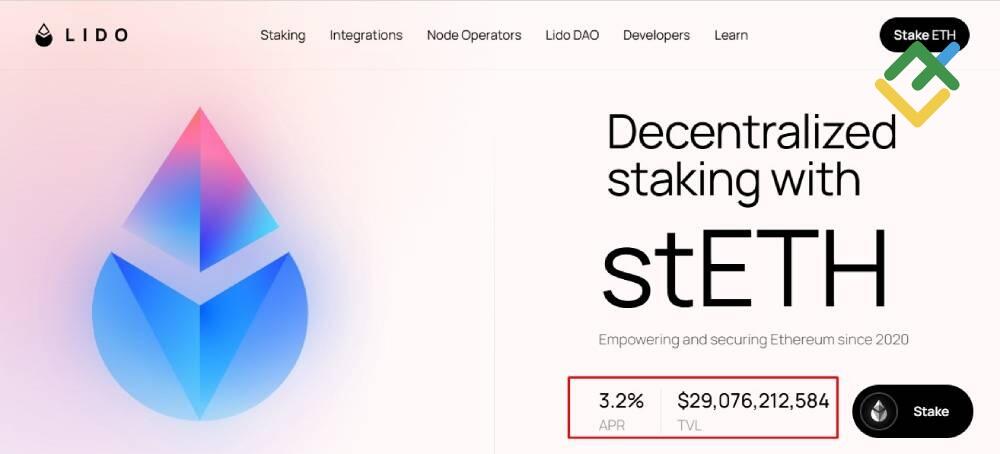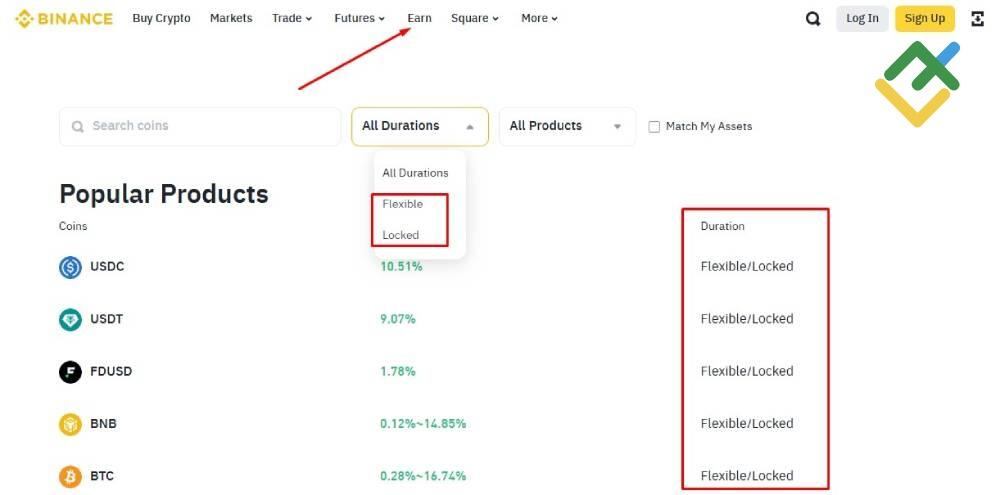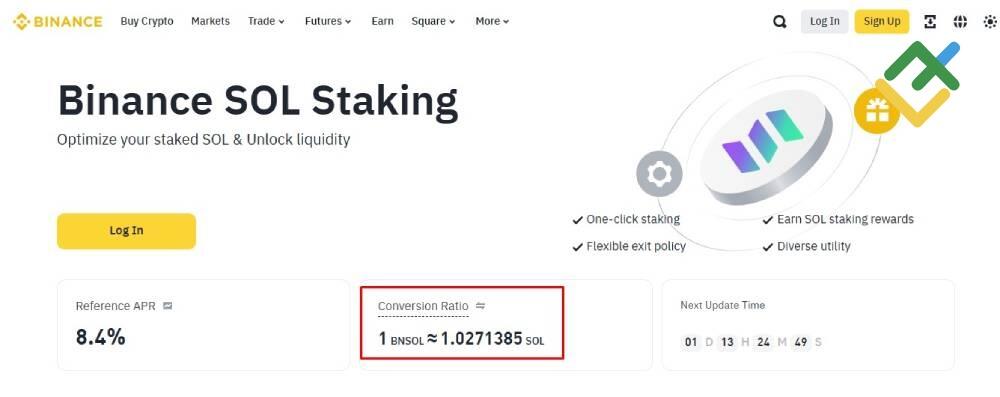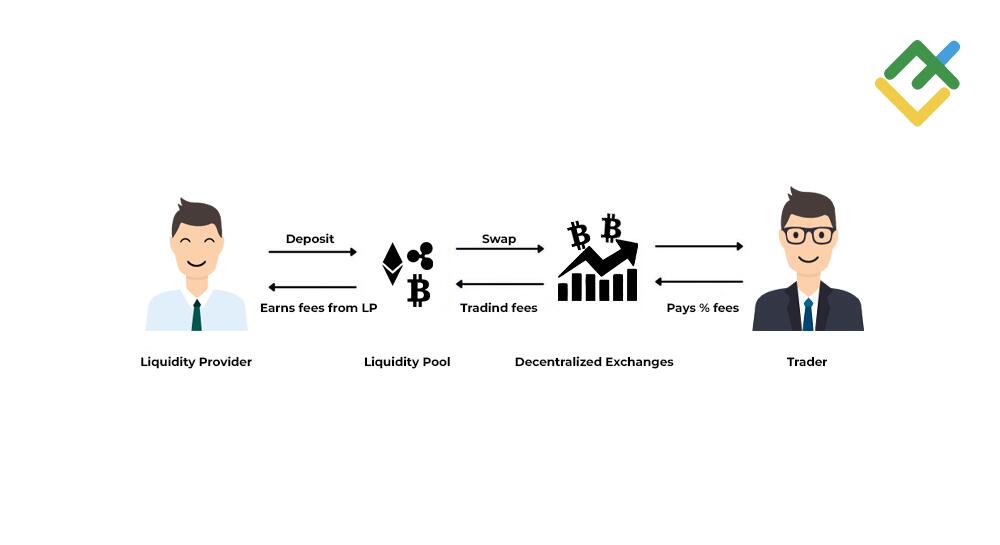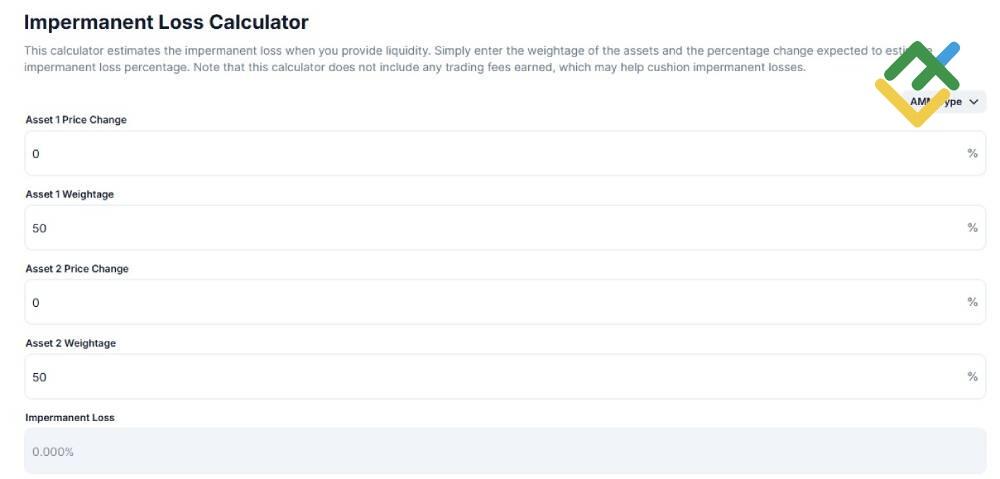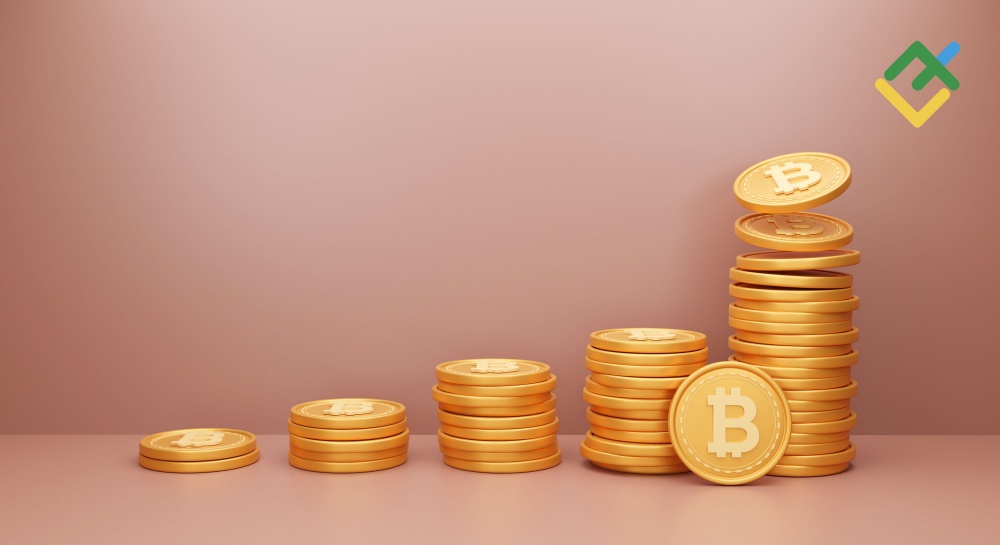
With the emergence of new consensus algorithms, staking has replaced mining, while farming has grown alongside the rise of decentralized finance (DeFi). Both tools are used, among other things, for passive investing. Native staking is similar to a bank deposit, where coins are locked for a fixed period. In liquid staking, investors receive derivative tokens in exchange for staked coins. They can be quickly sold or used in other investment instruments. Farming involves a more complex yield farming model — this could include direct lending to other participants or contributing assets to liquidity pools.
This article will introduce you to options for earning passive income from crypto through yield farming and staking. You’ll learn how staking and farming work, their differences, associated risks, and how to earn with these tools.
The article covers the following subjects:
Major Takeaways
- Farming and staking are two ways to generate income from cryptocurrencies without active trading.
- The primary goal of staking is generally to secure blockchain networks. Staking comes in two forms: native and liquid.
- Native staking allows users to lock their coins for a fixed period, receiving a percentage reward upon completion. Early withdrawal from native staking is typically not allowed or results in the loss of rewards.
- Liquid staking: Users receive derivative tokens in exchange for locked coins, roughly at a 1:1 ratio. These derivative tokens can be used in trading, as collateral for borrowing other coins, and more.
- Farming (yield farming) involves earning rewards by providing your idle crypto assets to other users. Investors supply liquidity to a pool or platform. For liquidity provision, they receive LP (liquidity provider) tokens representing their share in the pool.
- Yield mining (in farming or staking): Generating income by providing assets without additional hardware.
- A key yield farming risk is impermanent loss, tied to the mechanism of determining an investor’s share in total liquidity and token volatility.
- Farming algorithms are far more complex than staking, posing higher risks for those unfamiliar with their work.
What is Staking?
The first coins were primarily based on the Proof-of-Work (PoW) consensus algorithm, which has numerous drawbacks. Users earned rewards by mining with hardware that performed complex computations. The next generation of coins operates on the Proof-of-Stake (PoS) algorithm and its variations (e.g., DPoS), where staking replaces mining.
Staking means locking funds in a staking wallet or smart contract to help maintain the network’s operations and security.
Participants have two main roles here:
- Validators in staking earn income by supporting the network.
- Investors lock their assets in staking and delegate them to validators. Investor income comes from platform transaction fees. Users receive rewards in the form of additional tokens.
Validators are users who independently set up a node and connect to a PoS network to help maintain the blockchain. Anyone can become a validator by meeting the asset lockup requirement. Alternatively, users can delegate their assets to validators instead of running their own node.
Native staking is the process of locking a crypto asset directly on the blockchain to support its operations, for which the coin owner (investor) receives a reward. It’s similar to a traditional bank deposit: you “freeze” your coins for a fixed period and, at the end, earn a percentage in the same cryptocurrency as a staking reward. Native staking is purely for passive income.
The rise of the DeFi sector (decentralized finance) has led to the creation of more flexible products, one of which is liquid staking, a process similar to yield farming in its use of derivative tokens.
In liquid staking, coins are locked to support the network, but users receive derivative tokens in return. For example, stETH (a derivative of staked Ethereum 2.0) can be used as collateral to borrow other assets or for trading.
Differences Between Native and Liquid Staking:
|
Native Staking |
Liquid Staking |
|
|
Concept |
Locking cryptocurrency to support blockchain operations and earn rewards |
Locking cryptocurrency to support blockchain operations while receiving a derivative token usable in DeFi apps |
|
Liquidity |
Funds are locked for the staking period and unavailable for use or trading |
You receive derivative tokens that can be used as collateral or for trading. They can be swapped back at any time. |
|
Yield |
Fixed yield (APY – annual percentage yield), dependent on network conditions; it may be periodically adjusted |
Additional earning opportunities through using derivative tokens in DeFi protocols |
|
Risks |
Price drops of staked assets, potential validator technical errors |
Additional smart contract risks and potential depreciation of derivative tokens |
|
Asset Management |
Funds are managed by the validator; the user loses direct control |
Users receive liquid tokens they can manage at their discretion |
Staking is available on cryptocurrency exchanges and in staking protocols like Lido, Acala Network, Marinade, and Meta Pool.
Example of Liquid Staking on Binance:
For Solana:
In liquid staking, coins can be withdrawn at any time. When locked, users receive BNSOL tokens, which can be used as collateral for borrowing other crypto assets or for spot, futures, and margin trading.
An APR calculation example:
Staking Advantages
The benefits of staking are numerous, especially for native and liquid staking:
- Additional passive income: If you’re a long-term investor, your coins can generate passive income. By not using derivative tokens and instead storing your assets in a cold wallet for staking or smart contracts, you avoid the risk of temporary cryptocurrency price dips.
- Extra income for active crypto traders: Derivative tokens can be used for trading or as collateral to borrow other coins. While you’re using derivative tokens, the underlying coins in liquid staking continue to generate rewards.
- Flexible asset management (in liquid staking): Derivative tokens can be sold, freeing up your assets.
- Relatively low entry threshold: For some coins, an investment of 10-20 USD may be sufficient to start.
Staking Disadvantages
However, staking comes with certain drawbacks. Consider the following risks of staking:
- Not all cryptocurrencies support staking.
- Risk of underlying coin price decline: In native staking, locked coins cannot be withdrawn quickly. This issue is partially addressed in liquid staking, though some liquid staking protocols charge a fee for such “urgency.”
- Market risk: If derivative tokens are used in spot or margin trading, a drop in the underlying coin’s price could trigger a chain reaction, leading to automatic position closures and significant losses.
- Smart contract vulnerabilities: Risks increase in liquid staking due to the use of additional derivative tokens.
- Systemic Risks: In DeFi, everything’s connected. If one protocol fails, others can follow — especially with liquid staking in play.
- Platform fees.
There’s also a risk of fraud. With the rise in popularity of liquid staking and DeFi platforms, scammers are emerging, offering attractive yields under the guise of legitimate DeFi protocols. Common scams include fake websites that mimic well-known DeFi protocols, the issuance of counterfeit derivative tokens that can’t be redeemed for the underlying asset, and fake airdrops posing as liquid staking platforms, designed to steal private keys.
What is Yield Farming?
In 2020-2021, farming became a major trend, growing alongside the DeFi sector.
Farming, or yield farming, is the process of earning income by providing your funds to other users. It can take several forms. The simplest is direct lending to other users, such as on platforms like Aave or Compound.
The second form of farming involves contributing to liquidity pools on decentralized exchanges (DEXs) or other DeFi farming protocols, where yield farming provides liquidity to facilitate token swaps and trading.
Investors earn reward tokens for supplying liquidity to a project by depositing a specific pair of coins into a pool.
How it works:
- A user places assets into a liquidity pool by locking a certain amount of cryptocurrency in a platform or protocol’s smart contract to facilitate transactions on DeFi platforms, helping maintain the liquidity needed for the service to function properly.
- In exchange for the locked assets, the user receives liquidity provider (LP) tokens, representing their share of the total pool.
- Yield farmers earn additional cryptocurrency by providing liquidity to the pool as a commission-based reward from each transaction, paid in the farming protocol’s tokens. The more liquid and in-demand the pair provided, and the more assets contributed to the pool, the higher the reward. Platforms pay a percentage of the total pool in their native tokens.
Yield farming is made possible by decentralized financial applications and blockchain platforms, primarily DeFi on Ethereum and Solana, serving as an effective mechanism for bootstrapping liquidity in these ecosystems.
Farming Algorithm:
- Choosing a farming platform: Uniswap, Aave, or Compound.
- Providing liquidity: Depending on the algorithm, an investor contributes one coin or a pair (e.g., ETH/USDT), a common farming setup.
- In return for assets deposited into the liquidity pool, the user receives LP tokens proportional to their pool share. LP tokens can be sold on DEXs, used as collateral to borrow other coins, traded, or staked.
- They can also be swapped back anytime for the original assets and rewards.
Example #1: The user adds the DAI/COMP pair to the pool, thus providing liquidity and allowing other users to swap between these tokens on the platform. In return, the farmer earns a commission from each transaction on the network.
Example #2: An investor provides liquidity by contributing a CAKE/BNB pair to a PancakeSwap pool. In return, they receive LP tokens (CAKE-BNB LP, BEP-20 standard). Rewards are paid out in the platform’s native token, CAKE. Other cryptocurrencies can also be paired with CAKE.
Yield Farming Advantages
Yield farming offers various benefits:
- A key benefit of yield farming is the ability to earn passive income without active trading. It’s similar to a bank account: an investor makes a deposit, the bank lends out that money, and interest from those loans is used to pay returns to depositors.
- Flexible asset management: In exchange for providing liquidity, investors receive LP tokens, which can be sold or used as collateral for borrowing other coins (which can also be farmed).
- Diversification: Farming allows investors to diversify their portfolios by distributing assets across different pools and protocols.
- Earning on new projects: New startups on yield farming platforms launch farming programs to attract liquidity, and yield farmers can earn bonus rewards in the form of project tokens.
Farming shares many advantages with liquid staking, though their income generation mechanisms differ. Yield farming offers higher potential for profit, as liquidity mining offers the highest returns when fully exploited, though it also carries higher risks due to its potential for high yields.
Yield Farming Disadvantages
Investors must also consider the risks of yield farming, which include several downsides:
- Complexity: Understanding yield farming and its algorithms can be challenging for active investors. LP tokens can be repeatedly re-staked, creating a sort of investment pyramid (cyclic farming). At some point, this cycle could lead to the liquidation of all collateral.
- Impermanent loss: Liquidity providers (LPs) on DEXs that use automated market makers (AMMs) can experience temporary losses when the price of one of the tokens in the pool changes. This type of loss is caused by changes in the price of the tokens in the liquidity pool compared to their value at the time of deposit.
- Fraud risks: Liquidity pools may be phishing scams, and LP tokens offered on DEXs could be counterfeit.
- There’s also a risk of losing LP tokens or having them stolen, which could prevent users from accessing their underlying assets.
- Regulatory risk: Regulatory policies could impact the legality and functionality of farming. If farming is deemed a violation of cryptocurrency, securities, or tax laws, you might not recover your coins or withdraw them at an extremely disadvantageous price.
Some analysts argue that regulatory risk is overstated, as farming thrives on decentralized DEXs, which operate outside regulatory frameworks. However, sudden regulatory changes could trigger a market crash, similar to the dot-com bubble in 2000.
Key Differences: Yield Farming vs. Staking
Native staking involves holding assets, much like a fixed-term deposit — once funds are locked, you can’t withdraw them early.
Liquid staking and yield farming may seem similar initially: in both cases, you receive derivative tokens in exchange for locking your assets. However, the underlying mechanisms are very different.
Levels of Complexity
Unlike yield farming, staking is relatively straightforward.
You go to an exchange or staking protocol, choose a token based on its expected return, pick a locking period, and deposit your assets into a staking pool. That’s it. If you don’t want to take extra risks, you can store your derivative tokens in a cold wallet for peace of mind.
Compared to staking, farming is more complex. Yield farming requires you to select a liquidity pool based on various factors: which tokens are supported, volatility, potential returns, and the pool’s reliability.
Unlike staking, where the exchange usually acts as a trusted intermediary, liquidity pools can be riskier — scams are not uncommon.
Some farming models allow you to provide just one token, which works similarly to liquid staking. But if the pool uses a token pair, it gets more complicated. You must deposit two tokens into the liquidity pool. Most decentralized exchanges (DEXs) use automated market makers (AMMs) with formulas like:
Where x and y are the amounts of tokens in the pool, and k is a constant. That’s why most pools always have two tokens. Some platforms, like Balancer, support pools with three or more assets.
Deposit Periods
With native staking, you lock your tokens for a fixed period. Usually, early withdrawals aren’t allowed, though some platforms let you do it after a delay and with a loss of rewards.
Liquid staking and farming are more flexible — you can sell your derivative tokens anytime.
Transaction Fees
Fees depend on the blockchain, the platform, the liquidity pool, network congestion, and other factors.
In some cases, staking can have higher fees than farming — for example, staking ETH is expensive because of Ethereum’s gas costs.
However, under equal conditions, farming may involve higher fees due to the number of required actions: you deposit two tokens, interact with derivative tokens, move between liquidity pools, etc. Each case is different.
Token Requirements
For staking, you only need one token — it gets locked in the network.
In certain farming strategies, you need to provide two tokens in a 50/50 value ratio.
Example:
If Token A costs $10 and Token B costs $5, you’ll need at least 1 Token A and 2 Token B for farming, or 2 Token A and 4 Token B.
How You Earn
The income sources are very different:
- Staking rewards come from network fees. Users pay fees to make transactions, and stakers who help secure the network earn a share of those fees.
- Farming generates returns from commissions and lending interest. You deposit assets into a pool, the pool lends them out and earns interest, and part of the profits are shared with you.
Some experts say staking offers fixed returns, while farming returns are variable and can potentially deliver maximum yield under optimal conditions.
That’s not always true. Even liquid staking platforms clarify that yields depend on the number of participants and other factors. Farming returns can be potentially higher, especially with strong borrowing demand. In DeFi, loans are often collateralized, allowing users to participate in multiple projects simultaneously.
Investment Risks
The main risk in staking is token depreciation. Locking and unlocking cryptocurrency, as well as selling derivative tokens (in the case of liquid staking), takes time. And in the event of a global recession, you’ll likely have to sell your tokens at a reduced price.
Farming carries impermanent loss — this happens when the price of one token in the pool changes relative to the other. You could end up with less value than if you had simply held the tokens in a cold wallet.
The chart above shows that a twofold price variation results in approximately 5.7% impermanent loss, while a fivefold change leads to around 25%.
Example :
- You’re farming in an ETH/USDT pool.
- At the time of deposit, 1 ETH = 1,000 USDT.
- You deposit 1 ETH ($1,000) and 1,000 USDT. Total liquidity contributed: $2,000.
Then the ETH price doubles to $2,000. The AMM rebalances the pool to reflect the new market price. The pool now holds more USDT and less ETH.
The liquidity pool operates using the formula x * y = k. When prices change, the tokens are automatically rebalanced. If the liquidity constant (k) remains the same, your share of ETH decreases.
Let’s say the liquidity pool holds 10 ETH and 10,000 USDT (with a total value of 20,000 USDT, assuming 1 ETH = 1,000 USDT). You add 1 ETH and 1,000 USDT, increasing the total pool value to 22,000 USDT. Your share of the pool is: 2,000 / 22,000 = 9.09%. The constant product formula looks like this:
Then, the ETH price doubles to $2,000. The ETH price in the pool is calculated as the ratio of USDT (y) to ETH (x):
To reflect the new price of 2,000 USDT, the pool must rebalance the tokens:
For the core constant-product liquidity pool formula, we get the equation:
х = 7.78 ETH. Previously, the pool had 11 ETH when ETH was worth $1,000. After the price increase, the pool adjusts to 7.78 ETH to maintain the balance. Your share in the pool is: 7.78 ETH * 9.09% = 0.707 ETH. Your USDT share is: 0.707 * 2 * 1,000 = 1,414 USDT.
Result:
1. If you had simply held the assets in a cold wallet, you would now have:
- 1 ETH = $2,000.
- 1,000 USDT.
- Total value = $3,000.
2. If you had kept your funds in the liquidity pool:
- 0.707 ETH = $1,414.
- 1,414 USDT.
- Total value = $2,828.
Impermanent loss (missed profit): $3,000 − $2,828 = $172. Once you withdraw your funds, the loss becomes permanent.
Impermanent Loss Calculator Example:
Losses from Token Price Volatility
The main risk of staking is associated with price volatility. If the token you’ve locked drops in value, your portfolio suffers — unless you can quickly sell the derivative tokens before the price falls.
In farming, volatility affects the balance of tokens in the pool. What matters is which token in the pair goes up or down — the base token or the quote token. And if you’re farming with two volatile tokens instead of a volatile one and a stablecoin, the risks increase significantly.
Key Differences Between Yield Farming and Staking
|
Staking |
Farming |
|
|
Mechanism |
Supports the network using a single token |
Involves providing liquidity to DeFi protocols, a platform/pool; may involve lending one or two tokens |
|
Risk |
Low |
Medium to high; includes impermanent loss risk |
|
Yield |
Moderate |
Yield farming offers higher returns, but with higher risks |
|
Assets |
Altcoins and tokens that support staking |
Crypto pairs supported by farming platforms/pools |
|
Complexity |
Minimal knowledge needed for native staking |
Requires understanding of DeFi, farming mechanics, and how to use LP tokens |
Yield farming and staking similarities
Yield farming and staking offer versatile ways to grow your portfolio as both involve locking your assets and earning passive income.
Although farming came after native staking, staking is evolving too — for example, liquid staking lets you receive LP-like tokens while still earning rewards.
Passive Income
Both staking and farming can generate passive income.
In the case of liquid staking and farming, you can even trade derivative tokens. If the locked asset drops in price, staking/farming rewards may help offset the loss.
Volatility Risk
Volatility is a common risk in all crypto products, including staking and farming.
Crypto assets can lose 20–30% (or more) in a few weeks or even days. That’s a problem for short-term investors. For long-term investors, volatility risk is lower, as history shows that the crypto market tends to recover over time, unless you’re investing in low-quality “no-name” coins that the developers might request back after a few months.
Who Should Consider Staking or Farming
Native staking is ideal for investors who buy tokens for the long term and don’t plan to sell them during short-term dips or engage in active cryptocurrency trading. It’s best for conservative investors who don’t want to dive deep into blockchain mechanics and technical analysis or monitor the market 24/7.
Liquid staking is ideal for trend-aware investors. If the market dips, you can instantly withdraw your tokens, sell them, and return to staking once the market stabilizes and begins to recover. The risk of volatility is offset by the ability to exit at any time. However, compared to native staking, liquid staking typically offers a lower yield.
Farming is for experienced, active users who understand DeFi mechanics, can assess risks, and stay updated with crypto trends. Liquidity mining can offset volatility risks and offers high potential returns, but the risks are also high.
Conclusion
Let’s summarize:
- Yield farming supplies liquidity to decentralized apps and exchanges and is therefore a way to earn passive income.
- Staking and farming are both forms of passive investing. The main difference is how assets are locked. Staking requires one token, while farming requires two.
- The easiest way to stake tokens is on centralized exchanges. Farming is more common on decentralized exchanges.
- Staking rewards come from the fees paid by network users for transactions. Farming rewards are generated from the interest paid by other participants for using the provided liquidity.
- From a risk perspective, farming carries a higher chance of loss than staking due to impermanent loss. However, the potential returns are also higher. Both tools carry the risk of a decline in the price of the locked asset, which often happens during FUD (fear, uncertainty, doubt) in the crypto market.
Blockchain developers are constantly creating new ways to earn passive income. If you’ve mastered staking and farming and are looking for new opportunities, check out other tools, like dual-currency investments or peer-to-peer lending.
Yield Farming vs Staking FAQs
It can result in both profit and loss. You earn rewards by contributing your tokens to a liquidity pool. Risks include a sharp drop in token price, which can lead to losses. There are also technical risks such as LP token theft, smart contract failures, etc.
Yield farming can generate higher profits. Yield farming is also a flexible option for active investors seeking maximum profits. Native staking is similar to a bank deposit: you lock your tokens and receive interest after a fixed period. Farming gives you platform tokens in return, which can also generate additional income, for example, by purchasing other tokens.
Because it’s simpler and involves fewer actions: you lock your tokens and receive interest after a certain period. The main risk is a potential drop in the value of the staked token.
Staking offers lower complexity and risk, while farming may provide higher returns. A combined approach based on your strategy could look like this: 50% of your tokens go into native staking and 50% into active farming. This way, you diversify your risks.
No. While both generate rewards, they use different mechanisms. Staking involves locking tokens to support the network. Yield farming involves providing liquidity to a DEX or liquidity pool used for swaps or lending to other users. In both cases, the investor earns rewards for supplying their tokens.
Farming is much riskier than staking. The main risk is a drop in the value of the token used for farming and the liquidity token received in return. The likelihood of this depends on the token. The less support and value a project has, the higher the risk of a price drop in the locked token.
The content of this article reflects the author’s opinion and does not necessarily reflect the official position of LiteFinance broker. The material published on this page is provided for informational purposes only and should not be considered as the provision of investment advice for the purposes of Directive 2014/65/EU.
According to copyright law, this article is considered intellectual property, which includes a prohibition on copying and distributing it without consent.
{{value}} ( {{count}} {{title}} )
This post is originally published on LITEFINANCE.

